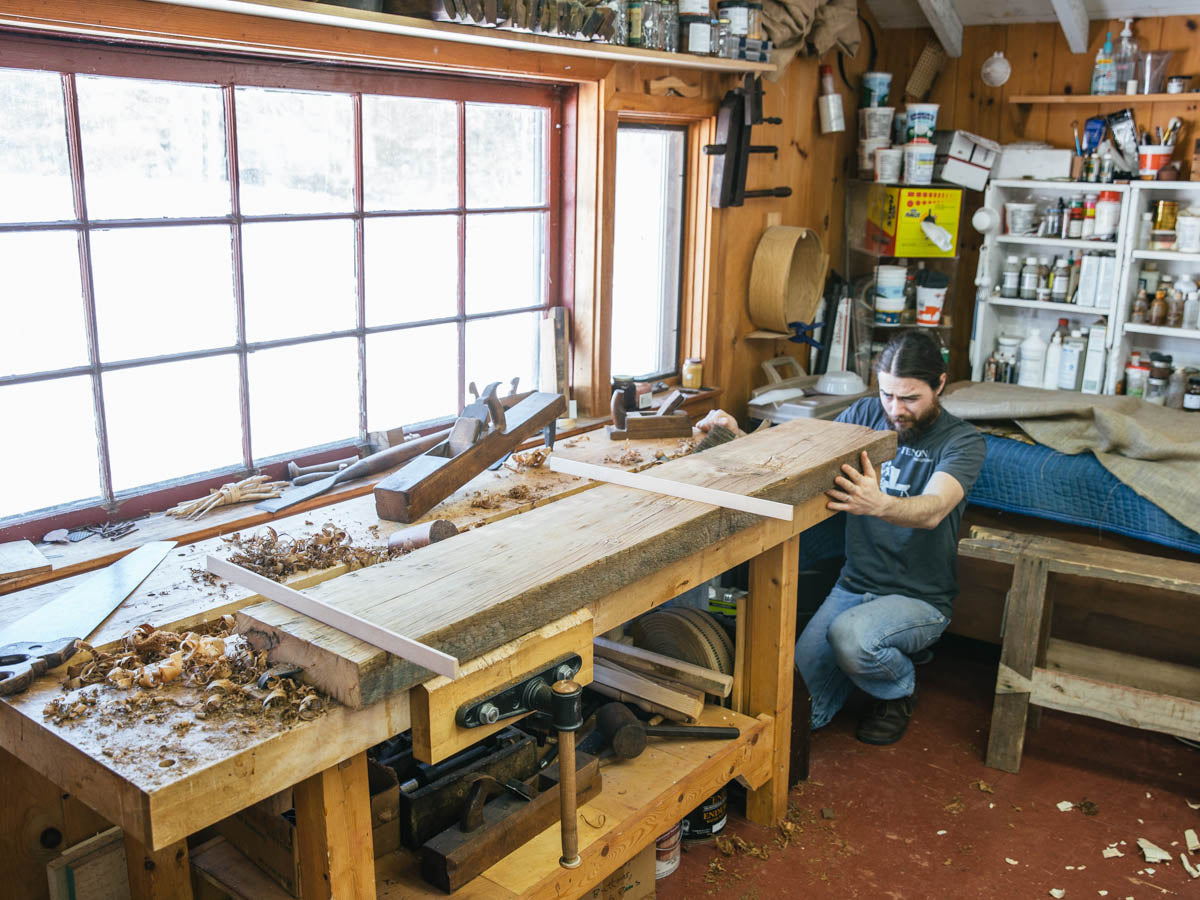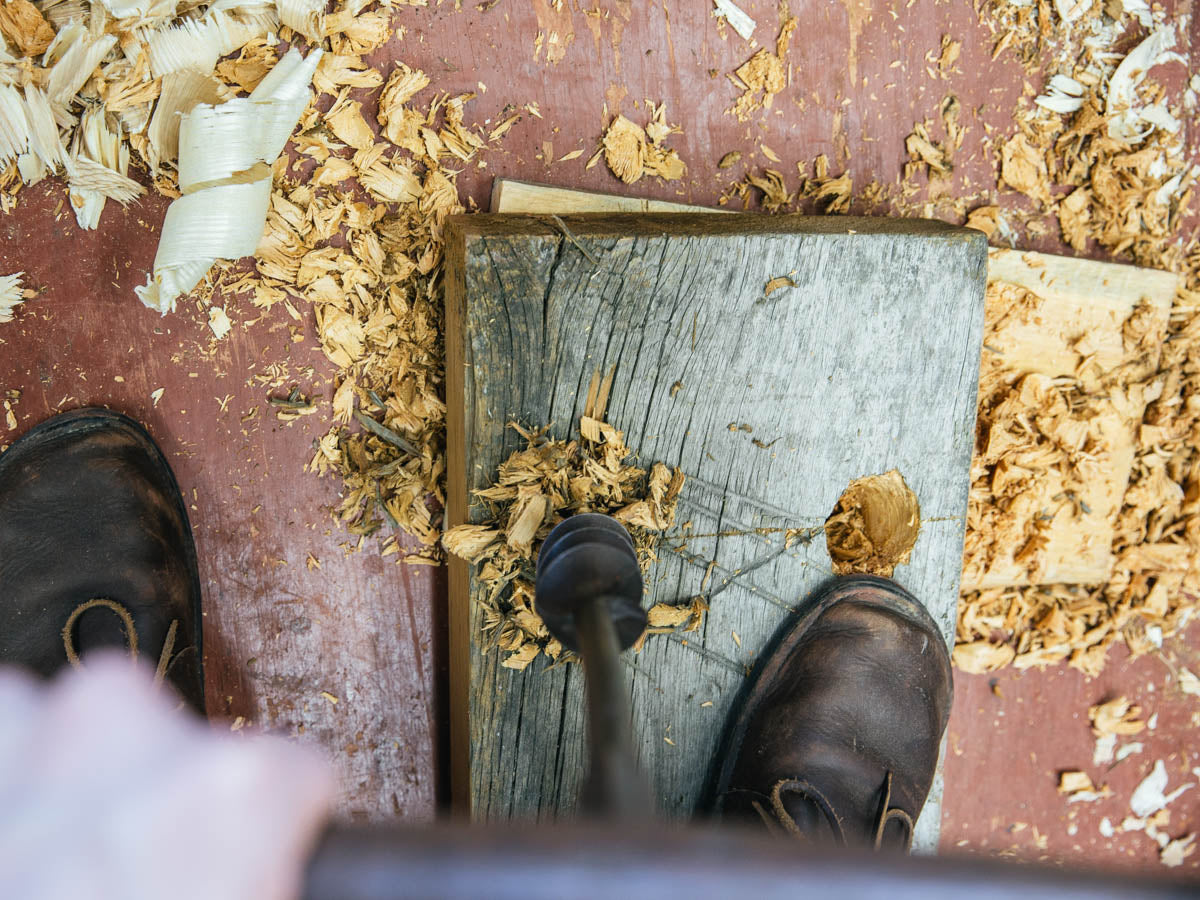
The Roman bench build is underway! Mike and I met this morning, gathered our tools and material (read: planks and firewood) and discussed features on period examples. We were primarily looking through Woodworking in Estonia for inspiration and design guidance. There are so many creative workholding solutions in there that we haven’t seen anywhere else. We can’t resist trying some of them out. If you haven’t ordered a copy of that book yet, what are you waiting for? Go order it now.

We each chose different versions based on our intended uses and materials available. I have a 200-year-old 2.75” thick pine plank that I am using for a benchtop. It’s 10.5” wide and cut to 5.5’ long. The top only had the slightest amount of twist so it needed little more than planing away the roughness. For the legs, I rived some ash firewood that has fully seasoned outdoors most of the year.




Mike’s bench is a half round of ash that he split, hewed, and planed flat. For the legs, he dug up a beaver-felled maple sapling from his woods. He will be using the sapling in the round as seen on many of these benches. Sure saves a lot of shaping! Come to think of it… why am I hewing a larger log into smaller pieces and then rounding them? Mike might be onto something here!


So after planing our tops, we got at boring the mortises. I have a t-handled auger just shy of 2” in diameter that I tuned up for my bench. Mike bored his mortises first with a 1” Irwin bit in a brace and tapered it with an awesome taper reamer that came out of some guy’s barn. It’s an all in one deal, bores the hole and reams along the way. Because Mike has a half round bottom, he had to bore his holes from the top so he couldn’t utilize the bore-and-ream-in-one feature. Too bad. That thing is cool.



Tomorrow, Richard Dort, our good friend from Leonard’s Mills Living History Days is coming over to help out. He’s been making staked benches for years so we should be in good hands.

Tomorrow we’ll start with fitting the legs into their mortises…


